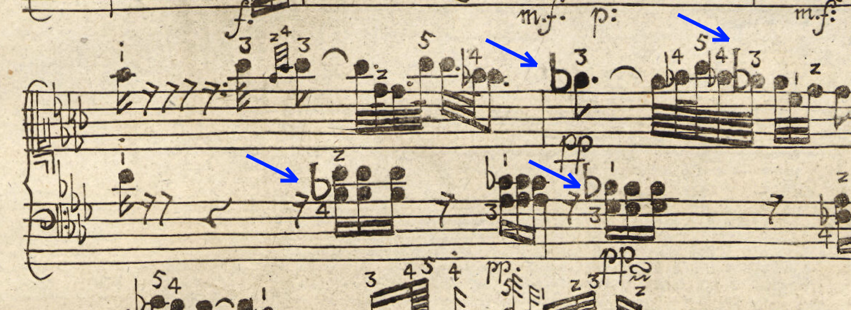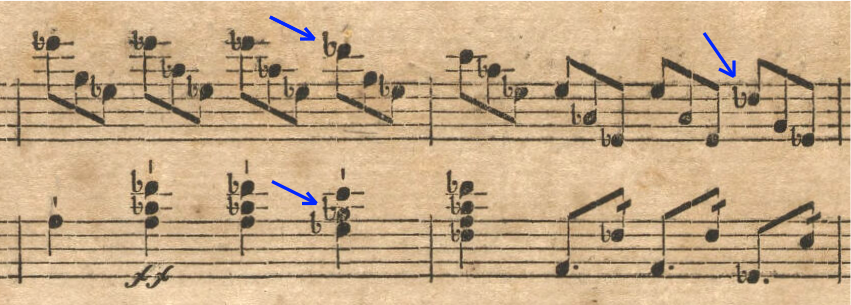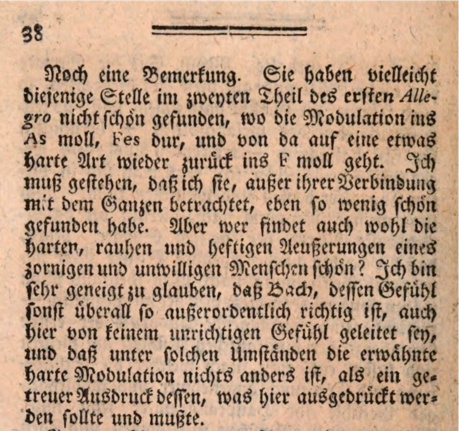



| Essay on the True Manner of Playing the Clavier Zweyter Teil | Part II |
Commentary (original text in black)
Close this tab or page to return to the Versuch)
| 1. Capitel. Von den Intervallen und den Signaturen | Chapter 1. On intervals and their signatures |
| Das große b ist noch nicht sehr eingeführt, so bequem es auch ist. | The large ♭ is not yet well-established, as convenient as it is. |
| In the 1762 and 1797 editions of Versuch II it appears that the typesetter did not have a large flat sign to indicate a double flat and used the roman letter “b” instead. Bach used the large flat sign in the engraved Probestück in B-flat minor (Wq 63/5/ii, mm. 6–7) and again in 1781 in the third set of “Kenner und Liebhaber” pieces—which were typeset, not engraved—specifically in Sonata III (Wq 57/6/i, mm. 53–54). Both examples are shown below. | |

|
|

|
|
| In a letter from 1 May 1781, Bach explicitly advised Breitkopf to use large flats in the "Kenner und Liebhaber" sonata. However, the symbol is easily misread as a single flat, and it was indeed misread even by Bach’s contemporaries. Johann Nikolaus Forkel apparently did so in his Musikalischer Almanach für Deutschland auf das Jahr 1784, Leipzig: 1783, p. 38: | |

|
|
Close this tab or page to return to the Versuch
Translation © 2024 The Packard Humanities Institute